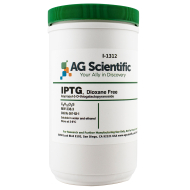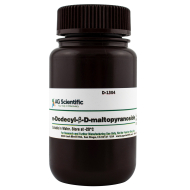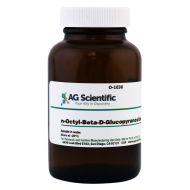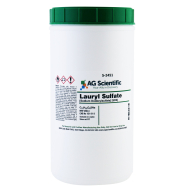Biological detergents are chemicals classified as surfactants, or surface-active molecules. Research scientists typically use these detergents in affecting the interactions within molecules of a biological sample being studied. These surfactants are used in biochemical research to target and manipulate the structure of membrane proteins without sacrificing their integrity or impacting their original function.

Membrane proteins are otherwise classified as lipids and enzymes, among other forms of molecules within a cell membrane. Even though scientists know a lot more now about the structure of membrane proteins, there are so many types and concentrations of biological detergents, that selecting the wrong type to extract or affect a protein can make or break an entire study.
Types of Biological Detergents
Many of these surfactants are most commonly classified by their ion charge in what is called the head group. Think of head groups as the brain of a molecule — it often contains multiple control centers. There are ionic, nonionic, and zwitterionic detergents. Based on the type of detergent selected, they can successfully create hydrophobic and hydrophilic interactions in a sample.
Ionic Detergents
The head group of ionic biological detergents either have a positive or negative charge as well as a hydrophobic tail, and are chemically stronger than non-charged detergents. They are a great choice if needed to bind to proteins and alter their structure. However, it should be noted that due to their strength, ionic detergents more often than not involve some level of protein denaturation.
Non-Ionic Detergents
In contrast to ionic, non-ionic detergents have no charge in their head group, and can be further separated into two groups: polyoxyethylene and glycosidic compounds. There are differences among the varieties of detergents in either group. However, the main difference is polyoxyethylene compounds contain neutral head groups and a tail of hydrophobic chains, whereas glycosidic detergents usually use a sugar as a head base, such as glucose, and have an alkyl polymer tail.
Non-ionic biological detergents are less harsh than their ionic counterpart, and therefore are better used when protein structure needs to remain intact. They are weak against protein-protein bonds.
Zwitterionic Detergents
Zwitterionic is a unique subgroup of detergents that contains both positive and negative atomic group charges in the head, making the overall charge neutral. Zwitterionic detergents have a mix of characteristics of both ionic and non-ionic detergents, and the three groups are often compared in research studies to understand best uses for each classification.
Like non-ionic, zwitterionic detergents have a neutral net charge but are a better choice for breaking protein-protein bonds. The extent to which proteins are affected by this process is less harsh than the outcome with ionic detergents.
Important Things to Consider When Choosing Your Biological Detergent
Research beforehand is always key! There are hundreds of articles on sites such as PubMed which highlight the uses and warnings for each specific detergent out there. Some key factors to review when selecting a biological detergent are: the intended outcome, pH and ionic charges, the physicochemical properties, different experimental conditions in the environment and samples, as well as the extent to which a protein should be denatured.
Read More: 9 Tips for Selecting a Biological Detergent
And finally, always try biodetergents that have been used successfully in targeting and isolating a protein first before moving to other types if you can!
Your Ally in Discovery
At AG Scientific, we deliver a wide range of high quality biodetergents, alongside many other reagents, enzymes, ionophores, and more, and we tailor custom reagents to meet the needs of our consumers at an individual level.





